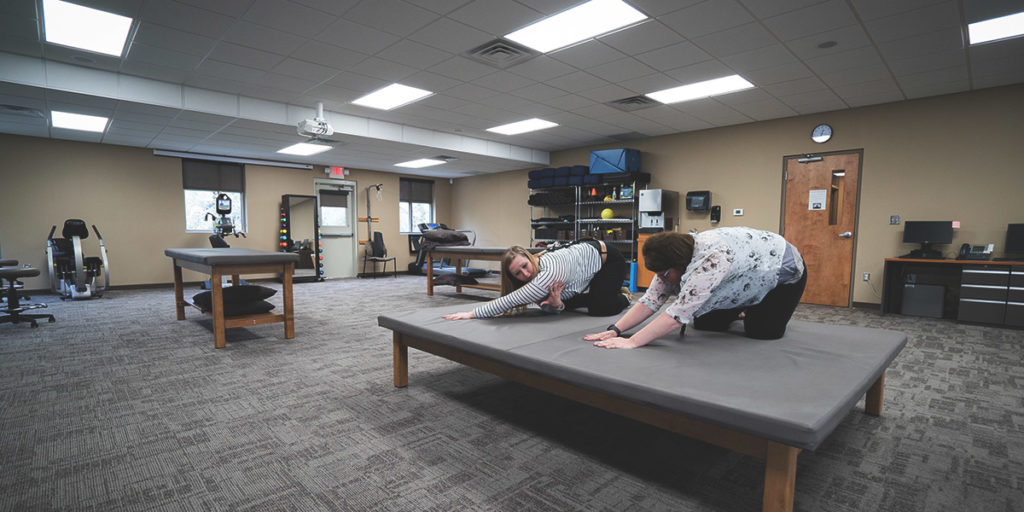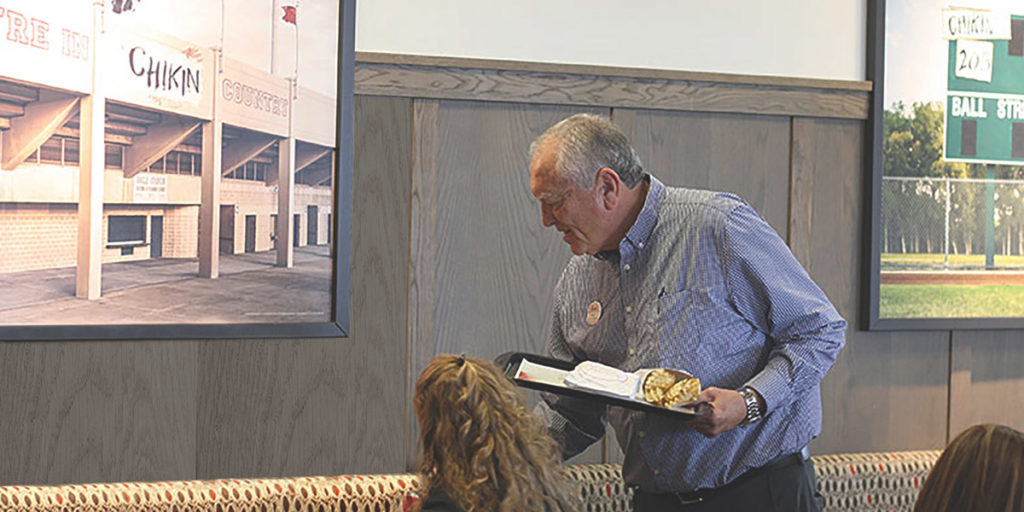
When Dr. Tiffany Leonida sits in her office with a patient, she can often hear the voices of her two daughters in the next room.
Her chiropractic clinic is their second home, or really their second playground. The two girls, Lucy and Myriel, often run around in patient gowns, pretending to be super heroes as they fly down the hallways and twirl through the lobby.
If this doesn’t sound like the typical chiropractic office, that’s because it’s not, and that’s the point.
Tiffany said her approach to care may be a little nontraditional, but it has largely been shaped by moments in her own story.
As a kid, Tiffany remembers being sick… a lot. She had strep throat four to five times a year along with whatever cold or flu her siblings had. At a certain point it felt ‘normal’ to be sick as often as she was, mostly because she couldn’t find a way to prevent it and there didn’t seem to be an alternative.
Fast-forward a few years to the end of high school and Tiffany found herself in a chiropractor’s office for the first time. She was an active kid who had pulled a muscle in her neck while doing the high jump. Tiffany figured she’d see the chiropractor a few times, her neck would feel better and that was it.
But what she found, was that as her neck improved so did her general health. She said the rest of her body slowly healed as she worked to realign her body. This experience, coupled with her geeky love of anatomy, encouraged her to study science and go on to chiropractic school.
Tiffany felt empowered as she began to understand how the back connected to so many other parts of the body. For the first time in a long time she felt hope for herself and other people who struggled with their health.
But during her second year of chiropractic school, her story took a sharp turn. Her long-time boyfriend suddenly went missing while on his way to an out of town conference. After three days, the local search and rescue team found his body.
Tiffany was in shock.
She didn’t know how to cope with the loss, so she dug deep into her part-time job at a coffee shop and her school work. She didn’t want to deal with her grief, mostly because she didn’t know how.
It was during this season of keeping her head in the books that she met Alex, a fellow classmate. They began studying together and slowly sharing about their personal lives. Two months after they began dating, Alex proposed.
In a span of two years, Alex and Tiffany got married started a practice together and had their first child.
“We don’t do anything by the book,” she said with a laugh.
The couple started their clinic to focus on chiropractic health for children and families, a passion that quickly became apparent to Tiffany because of her own experience with health.
They’ve structured their work around family and community, Tiffany said. Which translates to having her girls in the office if they’re not in school and getting to know her patients as if they were extensions of her family.
It also means that Tiffany does more than just chiropractic work during the week. Last year she began working with an organization called Parent Life, it’s a ministry that gives Tiffany an opportunity to mentor young parents who lack a support system. It allows her to use her experience as a parent and a medical professional to connect young moms with life-giving support and resources.
“I have this belief in life and its value, but also in women,” Tiffany said. “I’m not just pro-life or pro-women, I’m a blend and I needed to do something about that.”
Working beyond the walls of her practice has also given Tiffany the opportunity to be a part of both the beautiful and difficult moments of other people’s lives. It’s allowed her to enter in to grief and pain in a way that she’s familiar with because of the losses she encountered in her own story.
Tiffany said when she thinks about the layers and layers of her story they seem complicated and jumbled. She feels a little all over the place until she steps back and looks at the broader picture.
It’s when she does this that she can connect her childhood, her losses, her loves, her work and her passions to one another. They build on each other in a way that makes each of those moments more meaningful to her story.
It’s not finished, she said and it doesn’t all make sense, but that’s the point of an unfinished story.
There’s more to come, and that sense of more is why Tiffany keeps moving forward.







